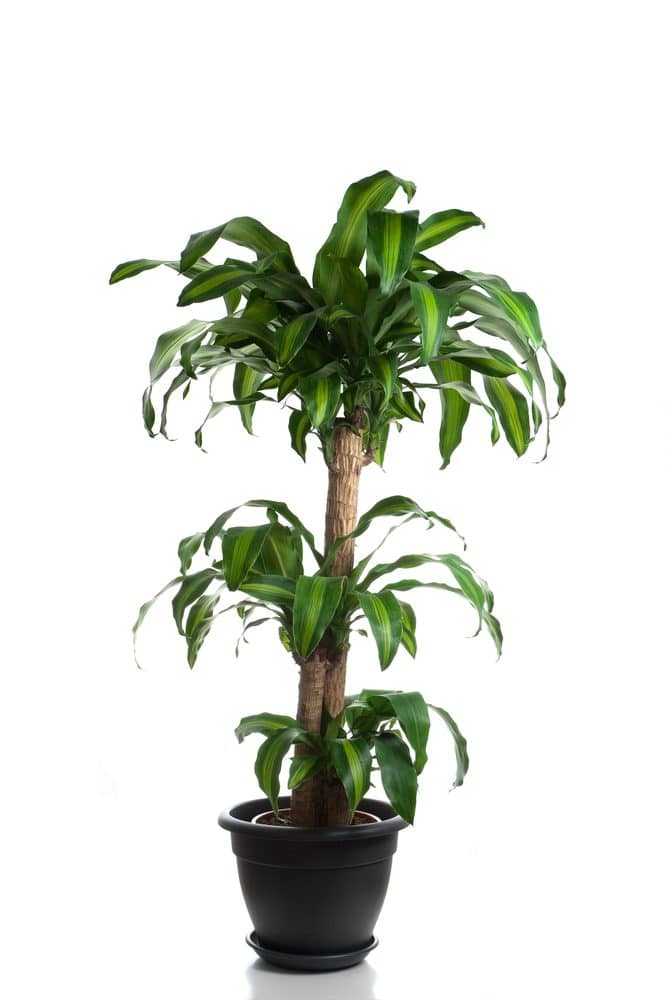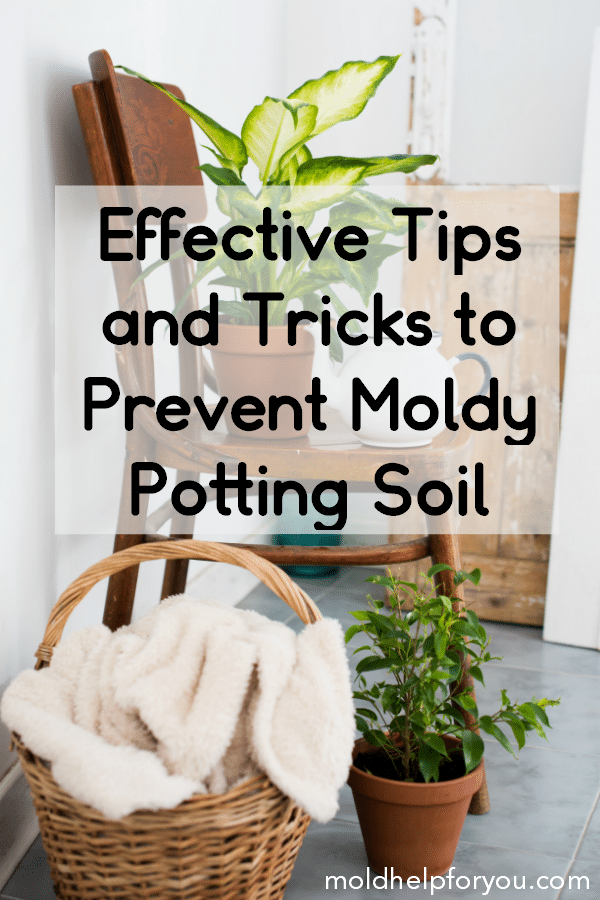How To Prevent and Remove Mold In Houseplant Soil
This post may contain affiliate links. Read our full disclosure.
We’ve all been told just how wonderful houseplants are for our indoor air. But what happens when your potting soil begins to grow mold. Is mold in houseplant soil safe?
Ideally you never want to invite mold into your home and adding houseplants to your life could certainly do this. But before you remove every plant in your home, let’s take a look at mold in plant soil, how to prevent it, as well as how to remove it.
What Types Of Mold Grow In Plant Soil?
Houseplant mold is typically a Saprophytic mold. This is not a specific species of mold but instead refers to an organism that feeds off and helps to break down organic material. It uses the carbon it gets from organic material to grow and develop. And this is essentially why it likes to turn your damp houseplant soil into a breeding ground.
There are several types of Saprophytic molds. The most common types of Saprophytic mold found on houseplant soil are mucor, Penicillium sp., Aspergillus sp. and Trichoderma sp.
Mold in houseplant soil is either active or dormant. Active mold in soil will be fluffy / fuzzy, soft, and smears easily. Dormant mold will be more powdery.
Is Mold In Plant Soil Harmful?
All soil has fungal spores. Such is the nature of soil. It’s part of how soil is made in the first place.
As such, mold in plant soil doesn’t always harm the plant. In nature, it actually is part of the life cycle of plants. However, moldy soil might also be a sign that your plant is not getting what it needs in terms of sunlight, air circulation, and moisture. The mold might also be competing for nutrition with your plant.
The real issue is when the mold begins to grow on the plant. At that point, the health of the plant is very compromised.
Now – mold in plant soil is a different story for humans. For some individuals, it can cause serious health problems. For many people, it will produce allergic reactions such as sneezing, congestion, itchy eyes, skin irritations. In addition, the mold spores can go airborne and settle elsewhere in your home where they can grow and cause a much bigger mold problem. It is never a good idea to ignore mold in plant soil.
Is It Ok To Use Moldy Potting Soil?
Some people think it is and will tell you to just mix the white mold into the soil and go for it.
I cannot in good faith tell you to use moldy potting soil. If you have an old bag of soil around and it is growing mold it is best to dump it and start fresh.

How To Prevent Mold On Soil
1. The first step in preventing mold on houseplant soil is to start with new, sterile soil. While a lot of soil will claim to be sterilized, I never trust it. So, I sterilize any soil I will using.
Sterilizing soil can be done several ways but I use the oven method. Put soil in an oven safe container. You typically want to go 4 inches deep. Cover with foil. Place a meat (or candy) thermometer into the center and bake at 180-200 F. (82-93 C.) for at least 30 minutes, or when soil temp reaches 180 F. (82 C.). Anything higher than that can produce toxins. Remove from oven and allow to cool, leaving the foil in place until ready to use.
2. Do not water your houseplant unless the soil is dry. When you keep plant soil moist, it allows mold to grow. Allowing the soil to dry out between waterings helps prevent soil mold from growing.
3. Never let plants sit in saucers full of water.
4. Air circulation in your home is key to mold prevention period. It also really helps prevent mold on soil if you have good air circulation in rooms with houseplants.
5. Make sure your soil gets a hit of sun daily. All houseplants need light and if possible, try to get the sunlight onto the soil as well.
6. Remove dead leaves immediately. Decomposing leaves are food for mold and create an environment conducive to quick mold growth. Also, be sure to trim dead parts off of plants.
7. Dust your houseplants regularly. Mold spores travel in dust so keeping dust to a minimum is important.
8. Sprinkle the top layer of soil with cinnamon or baking soda. I have no idea why this works but it does help prevent mold in houseplant soil. Unfortunately, you do need to reapply this every couple of weeks.
9. Use an all-natural organic microbial inoculant. This not only helps prevent mold on houseplant soil but also mold on the plant itself. In addition to that, it has magic super powers that makes plants incredibly healthy!
How To Get Rid Of Mold In Plant Soil
I hate to be the bearer of bad news folks but there is only one true way to get rid of mold in plant soil. You have to repot the plant in sterilized soil.
Sure, some people claim it is safe to just scoop out the parts of the soil that are moldy but guess what? Mold grows roots and grows them deep. So yes, you can scrape all the mold off of the surface of the soil but in a week or two you are going to have mold growing again.
So no shortcuts on this one. Take your plant out of the moldy soil, clean the pot thoroughly to make sure no soil is left behind, then re-pot your plant with sterilized soil.
In conclusion, houseplants can have a lot of benefits but only if you keep their soil mold free. Practice good mold prevention and likely you can enjoy mold-free houseplants for years to come.



Thank you for this article! I have a question I feel like I already know the answer to… I have quite a few houseplants and none of them have ever had moldy soil. I’m careful to not overwater, and to give my plants enough light. I repotted a pothos about a week ago, and I’m now seeing mold on the soil surface. The soil I used to repot was from a brand new bag of potting soil… do I toss the whole bag out? I’m very suspicious because I’ve never had mold until now!
Hi Jaimie! Yes, absolutely toss the bag, take all the soil out of the pot and clean the pot, then replant. I am hearing that because of the disruption to supply chains and labor with this “illness” this year, that a lot of people are having issues with potting soil. I am suspicious about what might be happening in the storage facilities these bags are spending time in.
Thank you for this! Definitely answered some questions I had when I brought home a new majesty palm and pothos 1.5 weeks ago and within a week I noticed fluffy white mold on top of the soil.
I am wondering, what is your take on the hydrogen peroxide method of washing the plant with HP and then planting in new soil?
After reading the previous comment and answer about supply chains and storage conditions I’m concerned that simply repotting will not be enough to clean the plants? I have quite a few other plants that do not have mold and seeing how both of these came home the same day and had mold grow at the same time, I’m sure it’s from the store. We’ve also been dealing with mildew in the apartment all fall and winter as it is naturally very dark, cold, and damp here, so I’d like to make sure this is completely eradicated and doesn’t contribute to the current mold junk I’m dealing with until we can move!
Thank you again!!
Hi Bethany! I had to talk to my “plant guru” about the HP method. I know it works but I wanted to find out if it would be a bad idea for certain plants. She said that for most houseplants, the HP method would be fine. She said the use the lowest concentration of HP, so basically the one they sell at any grocery store or drugstore. She said the only risk would be to certain indoor succulents. Even low concentrations of HP might burn their ends. Hope this helps!
Hi– I’ve repotted a plant twice now in sterile soil, but mold keeps growing? It also seems to attract gnats. I’m using neem oil for the gnats, and I’ve tried hydrogen peroxide/water and cinnamon powder for the mold. The plant seems healthy apart from the few dry, black tips. Do you think it’s the plant, or maybe I just need to let the soil completely dry?
Thanks!
What kind of plant is it? Allowing the soil to completely dry would be beneficial. Have you tried gnatrol?
Hi. The link to the organic microbial inoculant is not available any longer. Can you let us know or make a new link to the product, please? Thanks, Rebecca
https://www.amazon.com/TeraGanix-Concentrate-Germination-Conditioner-%EF%BB%BFHydroponics/dp/B07HKNH34F?&linkCode=ll1&tag=moldhelp-20&linkId=f8e6d77b4b17a301c84e8e2978c678dd&language=en_US&ref_=as_li_ss_tl
This is definitely a great product!